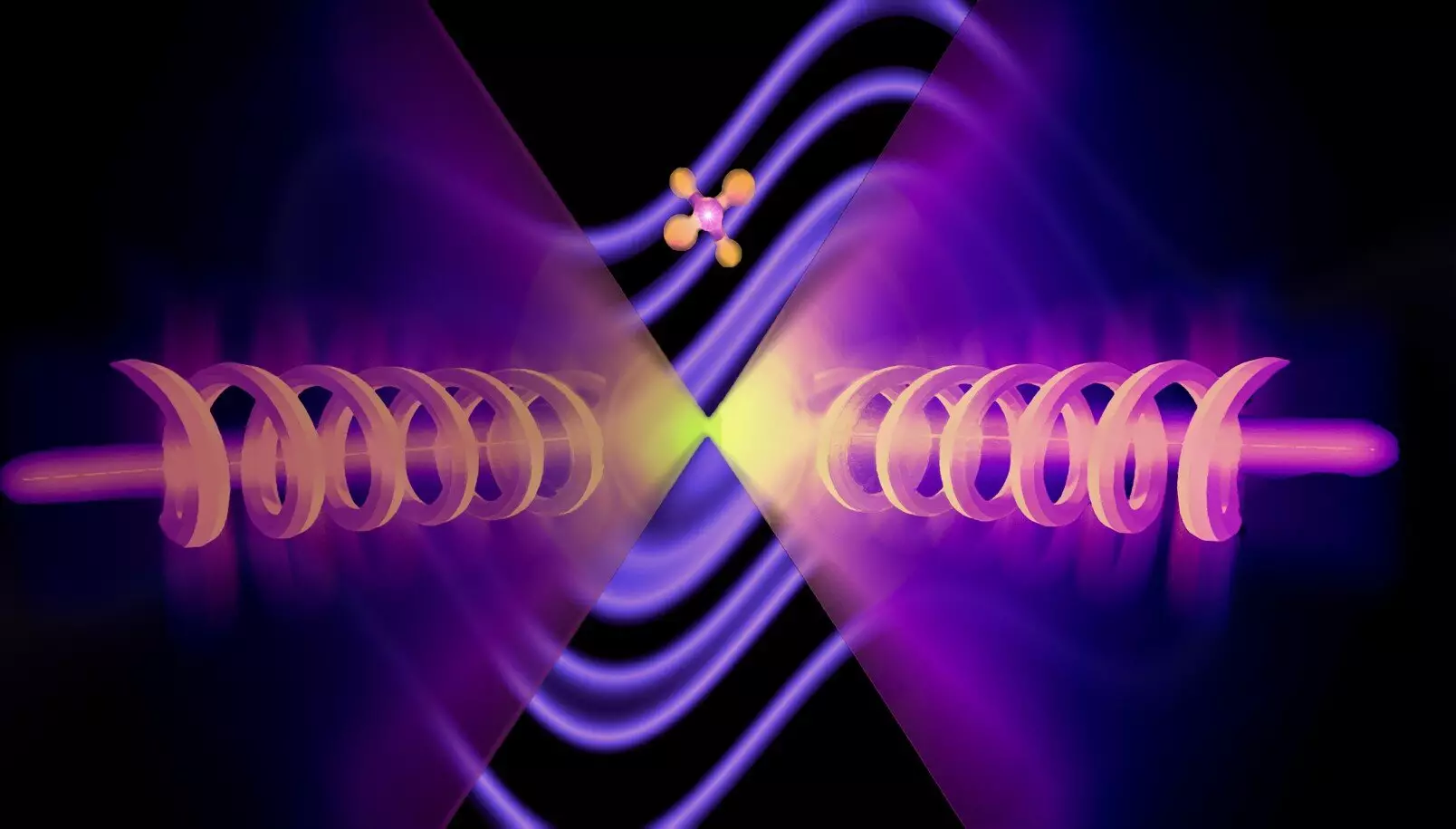Scientists at the University of Warsaw’s Faculty of Physics have made a ground-breaking discovery in the field of optics. By superposing two light beams twisted in the clockwise direction, they have successfully created counterclockwise twists in the dark regions of the resultant superposition. This research has been published in the journal Optica and holds implications for the study of light-matter interactions. Furthermore, it represents a significant step towards the observation of a peculiar phenomenon known as a quantum backflow.
Quantum mechanics and optics present a unique challenge compared to classical mechanics. In the quantum world, objects can exist in a state of superposition, meaning they can simultaneously occupy multiple positions or states. This creates the possibility for particles to move backward or spin in the opposite direction during certain periods of time. Backflow, as physicists call it, has not been observed in quantum systems until now. However, it has been successfully achieved in classical optics using light beams.
Theoretical works by Yakir Aharonov, Michael V. Berry, and Sandu Popescu explored the relationship between backflow in quantum mechanics and the anomalous behavior of optical waves. Researchers like Y. Eliezer et al. have observed optical backflow by synthesizing complex wavefronts. In Dr. Radek Lapkiewicz’s group at the University of Warsaw, Dr. Anat Daniel et al. demonstrated this phenomenon in one dimension using the interference of two beams. They discovered how the behavior of light becomes increasingly bizarre at the local scale.
In their recent study titled “Azimuthal backflow in light carrying orbital angular momentum,” the researchers from the University of Warsaw’s Faculty of Physics have taken the backflow effect a step further. They successfully observed the backflow effect in two dimensions by superposing two light beams twisted in a clockwise direction and locally observing counterclockwise twists. To capture this phenomenon, the scientists utilized a Shack-Hartman wavefront sensor, which provided high sensitivity for two-dimensional spatial measurements.
The observed backflow, known as azimuthal backflow, has numerous potential applications and implications. Light beams with azimuthal phase dependence, which carry orbital angular momentum, were first generated experimentally in 1993 and have since found uses in fields like optical microscopy and optical tweezers. Optical tweezers, in particular, are valuable tools that allow for the manipulation of objects at the micro- and nanoscale. They are currently employed in the study of cell membranes, DNA strands, and the interactions between healthy and cancer cells.
The scientists note that their current demonstration can be interpreted as superoscillations in phase. Superoscillation refers to situations where the local oscillation of a superposition is faster than its fastest Fourier component. This phenomenon was first predicted in 1990 and was later connected to backflow in quantum mechanics. Professor Michael Berry highlighted the power of superoscillation by illustrating that it is theoretically possible to play Beethoven’s Ninth Symphony using sound waves with frequencies below the threshold of human hearing. However, the practical application of superoscillations is limited due to the very small amplitude of the waves in the super-oscillatory regions.
According to Bohnishikha Ghosh, a doctoral student involved in the research, the backflow phenomenon observed in the study is a manifestation of rapid changes in phase. These phase changes could have significant implications for applications involving light-matter interactions, such as optical trapping and the design of ultra-precise atomic clocks. Additionally, the publication by the researchers from the University of Warsaw’s Faculty of Physics represents progress towards the observation of quantum backflow in two dimensions, which is thought to be more robust than its one-dimensional counterpart.
The recent discovery of azimuthal backflow in light by researchers at the University of Warsaw’s Faculty of Physics opens up new possibilities for the study of light-matter interactions. By superposing light beams twisted in one direction, they have successfully created counterclockwise twists in the resultant superposition. This breakthrough could have significant implications for various fields, including optical microscopy, optical tweezers, and the design of ultra-precise atomic clocks. Furthermore, the observation of backflow in two dimensions represents progress towards understanding this peculiar quantum phenomenon. With further research and experimentation, scientists hope to unlock more secrets of the quantum world and uncover its fascinating properties.


Leave a Reply